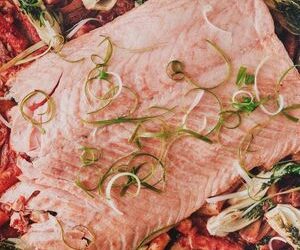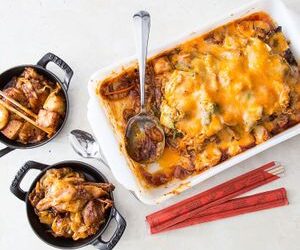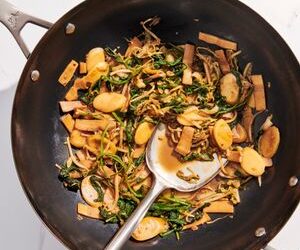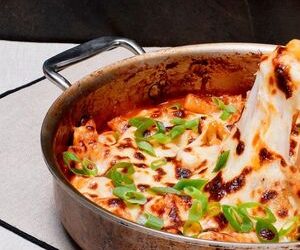Tteokbokki are rice cakes simmered in a garlicky, sweet, and spicy gochujang sauce until velvety and tender. Tteok means “rice cake” and bokki means “to stir fry.” It’s a popular Korean stove-top dish I learned to cook as an always-ravenous kid.
I was maybe 11 or 12? After school, I beelined into the kitchen and tossed tteok, sliced onions, a heaping tablespoon of minced garlic (we kept it by the jar in the fridge), gochujang, sugar, soy sauce, and a little water into a small pan to simmer while I loitered around the snack drawer.
In just 15 minutes, I had fiery-red chewy rice cakes to hold me over until dinner. A comfort of my childhood, tteokbokki is all I want to eat at the end of a long day. It’s the perfect snack or main meal served on its own.
This recipe is a slightly more grown-up version—I added more vegetables, like cabbage and scallions, and a couple of hardboiled eggs. It is still simple and quick.
Simply Recipes / Alison Bickel
What Is Tteok?
Tteok refers to a broad subsection of food with seemingly endless varieties, just like bread for example. Generally, it’s made by steaming dough made with rice flour and forming it into all sorts of shapes for eating as-is, braising, pan frying, or adding to soups.
You’ll find tteok in two sections of most Asian markets:
- The tteok for this recipe can be found frozen or vacuum-packed in the cold foods aisle. There you will find two common shapes: A thin 2- to 2 1/2-inch cylinder called garaetteok (which I used for this recipe) or a flat oval disc used in soups. Both are milky white in color. It’s rare to use a whole bag of tteok at once unless you’re cooking for a large group, so leftovers are expected. Tightly tie the bag or transfer the tteok into a zip top bag and store it in the freezer.
- The ready-to-eat prepared food section has tteok that are soft, chewy, and combined with other sweet or savory ingredients like brown sugar, steamed black beans, sesame seeds, or dried persimmon. They are often sold on small styrofoam trays wrapped with plastic wrap. Some stores won’t keep these fresh tteok on hand since they’re considered celebratory treats worthy of pre-ordering for special days like birthdays, Lunar New Year, or Autumn Harvest Festival.
What Is Gochujang?
Gochujang, a bold and spicy Korean chili paste, is a linchpin ingredient in a well-stocked Korean pantry. It is the backbone to many dishes—the paste isn’t used on its own but mixed into into sauces, dips, stews, and marinades.
Gochujang paste is almost always sold in a red rectangular plastic tub with a flip-top lid. It’ll be cheaper at your local Asian market. If you’re buying it online, I recommend one made by Chung Jung One like this or this. You’re looking for the paste, not gochujang sauce, which is milder and thinned out with water, vinegar, soy sauce, and other seasonings.
Gochujang is a fermented product that will last up to one year in the fridge. Keep it tightly covered so that it doesn’t oxidize.
Simply Recipes / Alison Bickel
Make Your Family’s Version of Tteokbokki
Tteokbokki always has rice cakes and gochujang, but every family makes it slightly differently. Here are some variations:
- Although you could substitute gochujang with gochugaru, Korean red chili pepper flakes, it becomes an altogether different recipe. There are no other proper substitutes for gochujang. If you prefer it less spicy, add less and adjust the seasoning with soy sauce.
- Garlic is a must, but use equal amounts of carrots, leeks, shiitake mushrooms, napa cabbage, or bok choy as vegetable substitutes. Cut them to about the same size as the garaetteok.
- If you can’t find garaetteok, use the rice cakes that looks like flat oval discs. They are thinner and will cook much faster—reduce the cook time to 5 minutes.
Can I Make Tteokbokki Ahead?
I wouldn’t recommend it. Just like you wouldn’t pour yourself a bowl of cereal and milk for later, the tteok will become waterlogged and mushy the longer it sits in the sauce.
If you’d like to plan ahead, cut the vegetables, make the sauce, and store each in separate containers in the fridge until you’re ready to cook and serve the tteokbokki.
Simply Recipes / Alison Bickel






